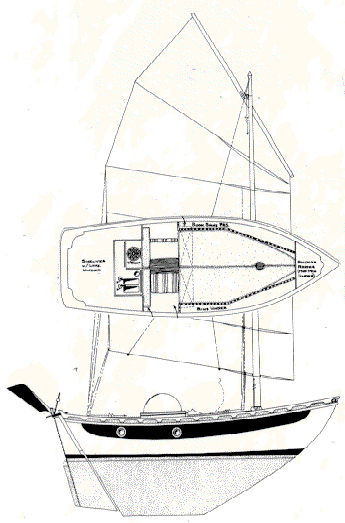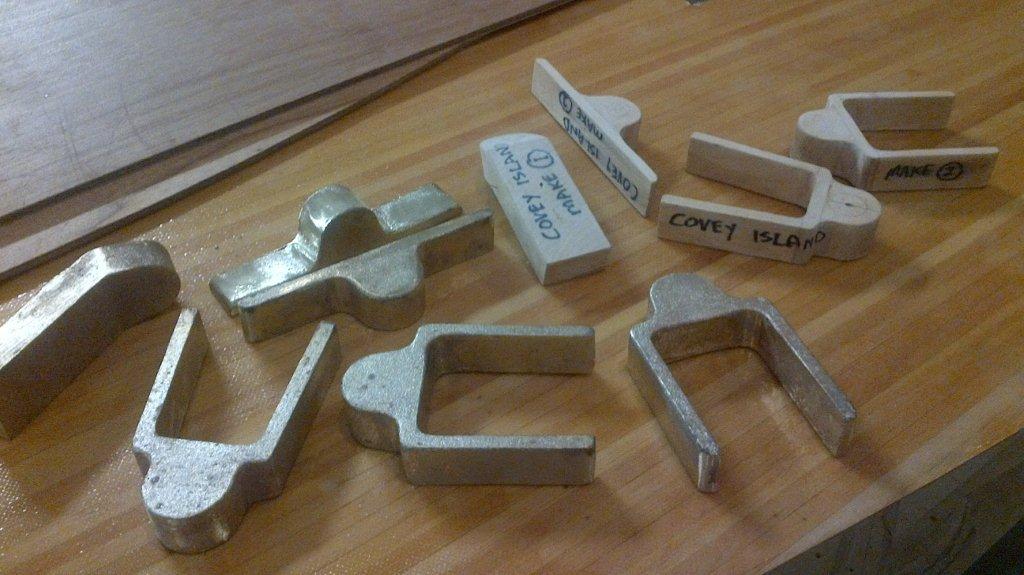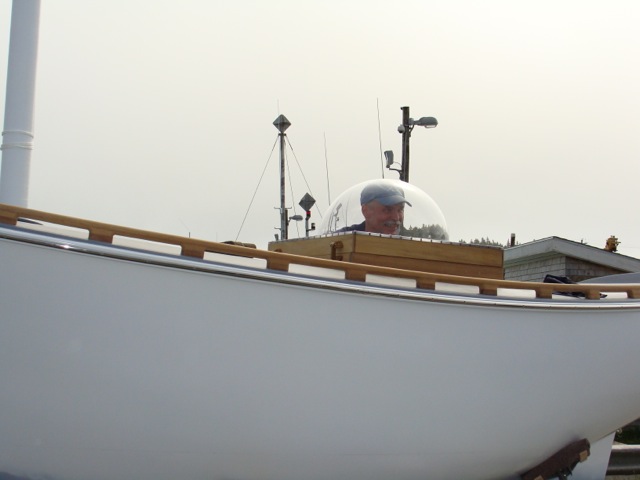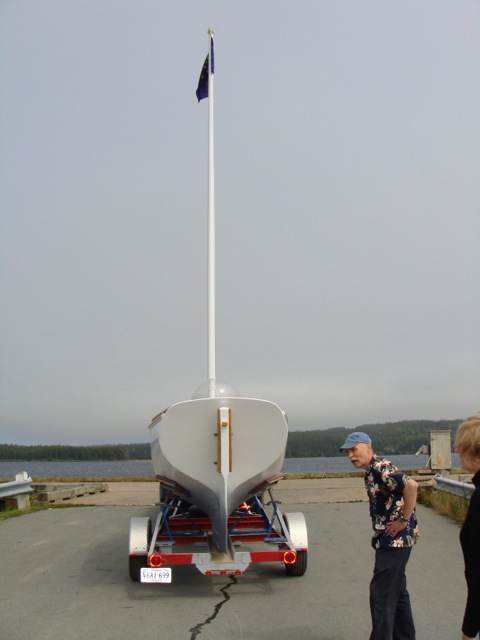 |
| The newer version has less draft than pictured |
Farthing
 |
| The newer version has less draft than pictured |
LOA 14'8" LWL 11’0" Beam 5'4" Draft 3'0" Displacement 2,160 lbs. Berths 1
Of all the sailing designs we've done, Farthing seems to capture people's imagination the most. A true singlehander, she cannot accommodate more than one. Actually two could sleep in the berth--as long as they don’t both need to sit up, eat, or sail at the same time! But she does offer her master quite a bit, for her diminutive size. She can be sailed while seated on the deck with one's feet in the hatch, or standing up in the hatch, leaning against the galley counter, or the vane gear can do the steering while you sit below. The berth is large and comfortable, and does not have to do double-duty as a seat. Two separate seats are shown but one or the other will need to be folded up for leg room. The galley area is large, and the storage space is meant to be sufficient for enough carefully-planned provisions to make feasible the longest of the normal ocean-crossing routes. She's small enough so that there are probably still plenty of records she could set. Remember, though, her maximum speed is around 4.4 knots, which puts the absolute minimum passage time from Newport, Rhode Island to Britain at around 24 days. In the trades she will average 106 miles per day. In the variables she will average around 80 miles per day. There is nothing about the design that is not ideal for offshore work, given her size.

Oddly enough these gudegons were cast without using cores to create the holes, which increases the amount of machining to be done, but they look like they'll hold up fine.
Farthing is probably the least expensive way to achieve and maintain permanent global mobility. Just knowing she can do it is part of her appeal and a tougher looking boat of her size would be hard to imagine. She’d make a great minimum coastwise cruiser or live aboard, offering perhaps the fewest reasons for anxiety and the least significant maintenance of any boat for that purpose. She's deep in proportion to her size, but her draft is still small enough for you to jump over the side to wade ashore or push her off, and a small inflatable could be carried. She'd be the Cadillac of frostbite classes. There would be little anxiety in sending a lucky youngster off in one to learn a little self-reliance. At about the same cost, she'd be a nice alternative to a car, as a graduation present!

Without a varnished sheer guard, the contrasting painted wale and the bottom paint she looks a little stark, but you get the idea.
Recently a client in Alaska has paid us to fully loft Farthing, which expands the set by 8 additional drawings and supplies dimensioned patterns for a fully lofted building jig and lofted dimensioned patterns for the parts of the vessel. This gives a total as of early 2011 of 26 drawings in the set. This means that you save an enormous amount of time in lofting. If professionally built you'll save in actual dollars probably as much as it would cost for a complete custom design this size.

As if Farthing wasn't small enough, below you will find pictures of a model of her at that time under construction by our friend Eric Crossen in Alaska in preparation for building his full sized boat. This allows him feel that he has already done everything once by the time he is ready to start building his boat. Eric spent many years on offshore crab boats off the coast of Alaska. There really isn't any more rugged life that that and he chose Farthing as the most seaworthy small vessel he could find. We are very pleased that he is sharing his experiences with us in photographs.
Eric decided to have a builder in Nova Scotia build his Farthing, which he has named "Seafaith". Eric hopes to do an Atlantic crossing in 2016. She has a carbon fiber mast and yard by Composite Engineering. Both Eric and the builder have sent us a lot of pictures. It proved hard to pick out ones which really showed what she looks like but here are a few. When she's all rigged up and sailing, I'm hoping we'll get some more.
| Study Plans | $66 | |
| Complete Building Plans | $1,188 | |
|
|
|
The miniature shipyard with the section molds and centerline structure set up and ready to plank |
|
|
|
Another view of the section molds before adding the centerline structure |
|
|
|
Starting the planking with plastic over the edges of the molds to prevent the glued strip planking sticking to them. Plywood was used for the transom only because this is a model. |
Coin Collection / Shilling / Stock Plans Order Form / Stock Plans List